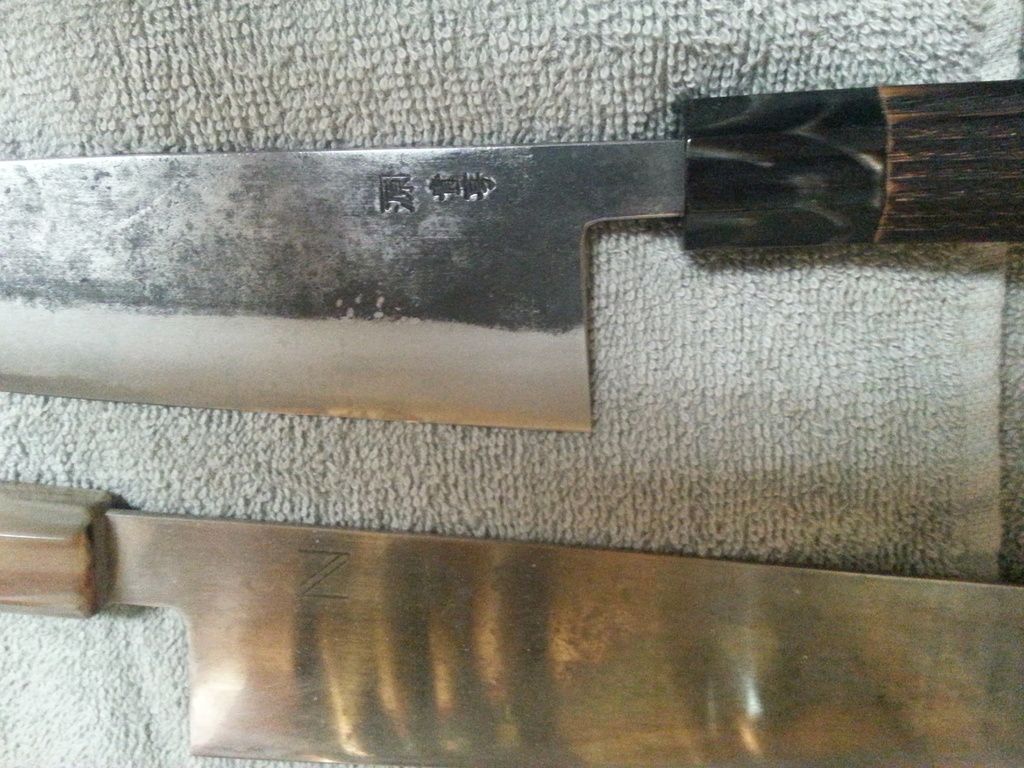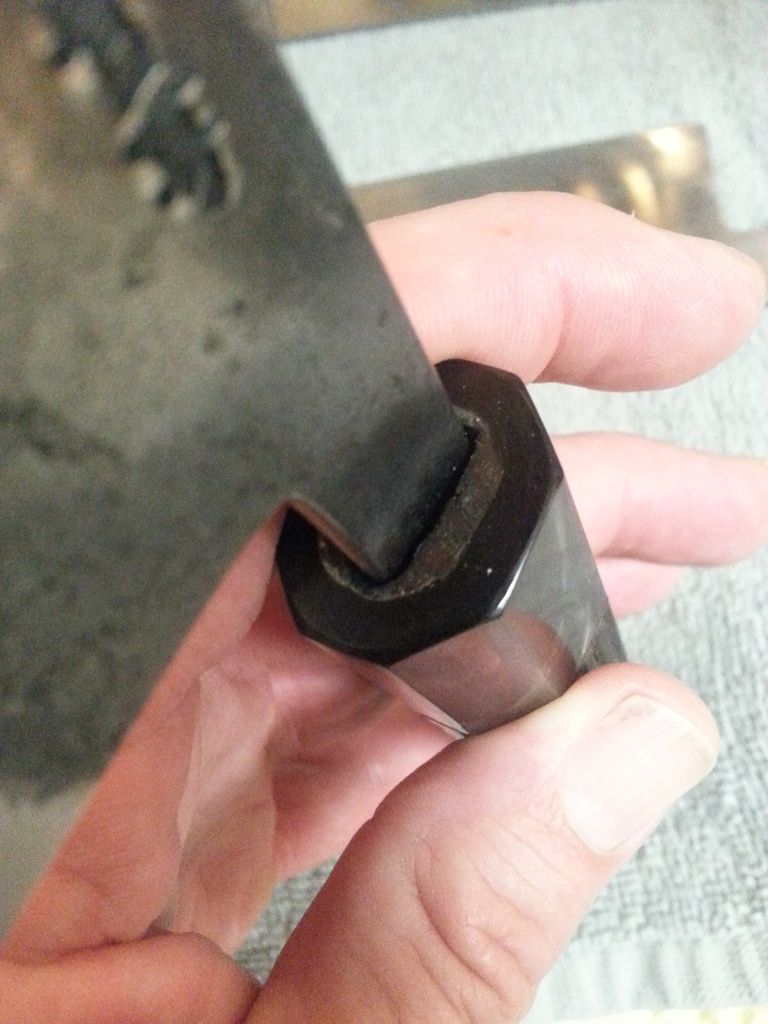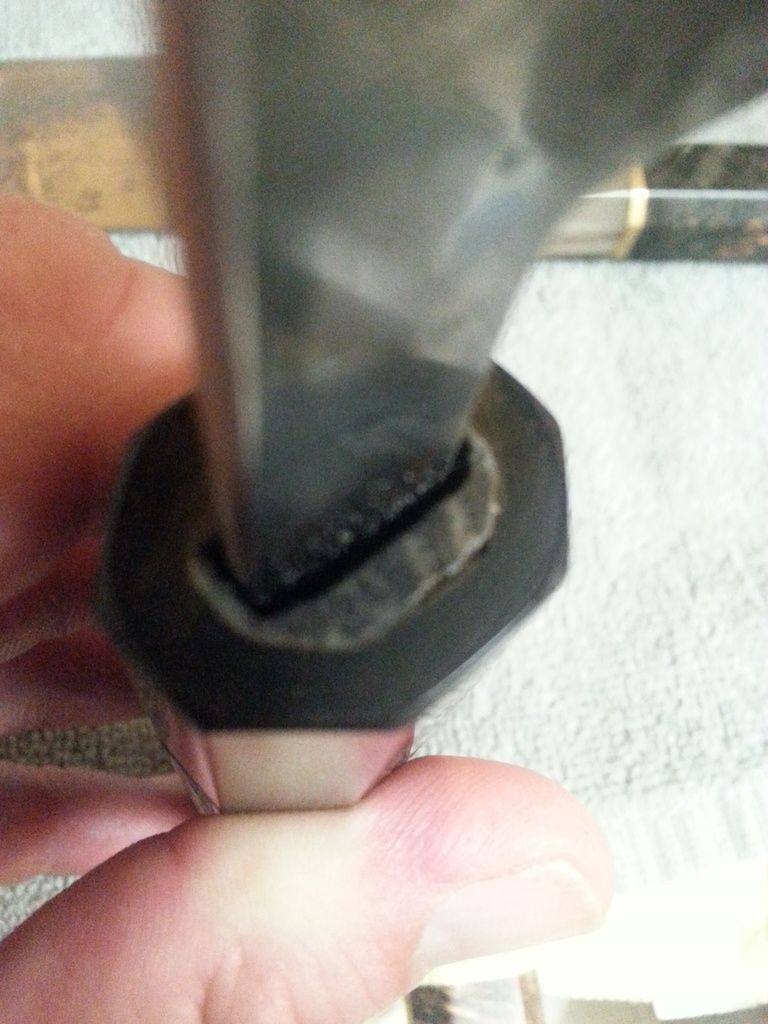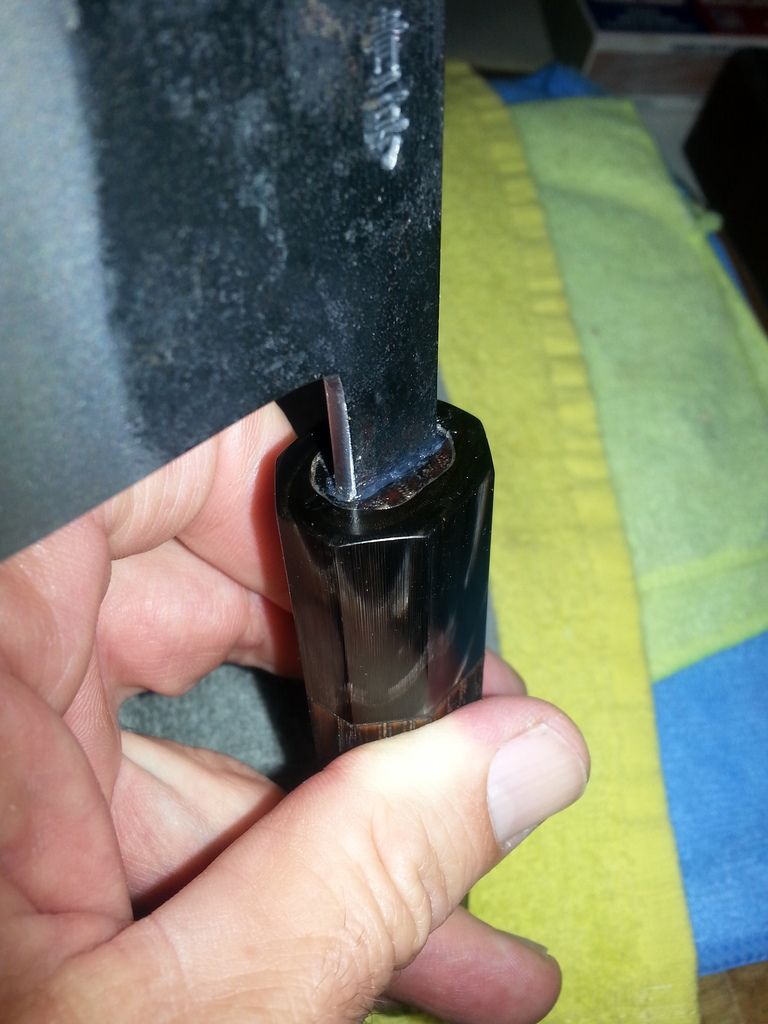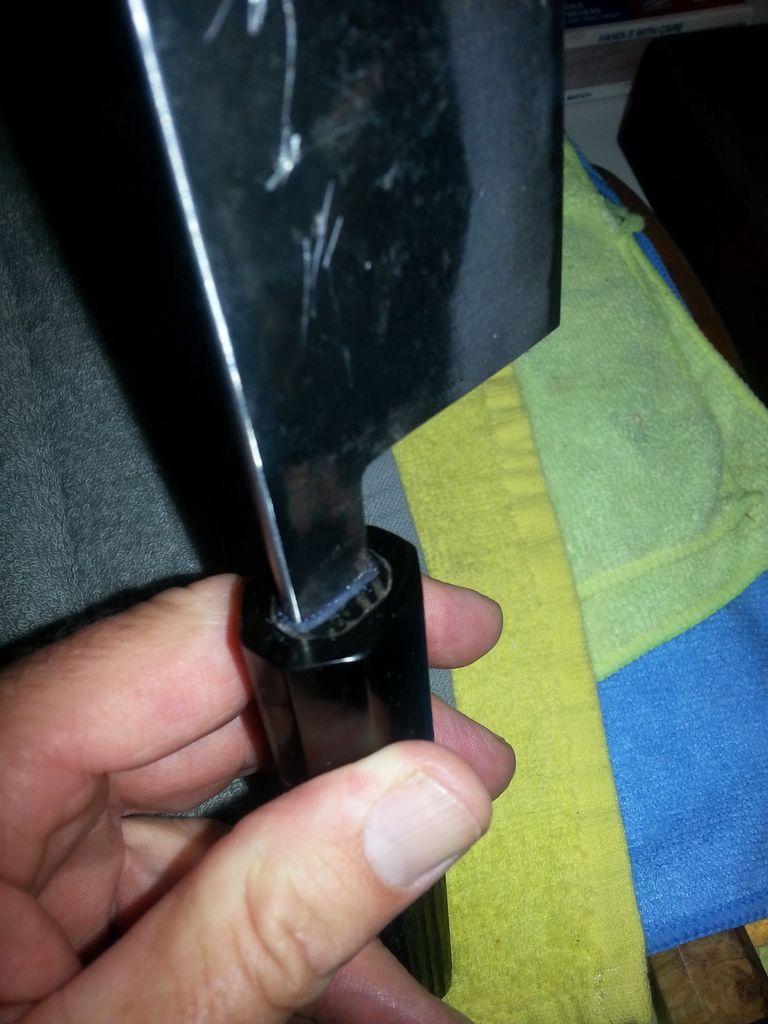Looks like you've got this settled by now but I'll add a second to James' approach with hot glue for removable handles for future reference. I will sometimes cut a few wedges of a hot glue stick and put them into the tang hole. Heat the tang and slide it in....glue melts right around it and hardens back up within a minute or two. I'll then seal the top opening with either wax, or if I want extra insurance and protection, a very tiny bit of epoxy that I can scratch off if I ever need to remove the handle. This method works well if it's a tight fit to begin with.
For handles where the fit is looser, or if I'm worried about problems caused by a hot tang (some exotics do not respond well to high heat inside. Ebony and blackwood, for instance, are so dense that burn-in's can cause cracks or worse)...In these cases i use a mix of liquid hide glue and saw dust to make a paste. Hide glue is safe, super strong but reversible with heat. Ages back here in the shoptalk section I put up a post detailing this method.
